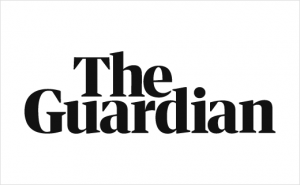
(This post originally appeared on The Guardian)
According to the Small Business Administration, more than 1.6m businesses received funding under the government’s Paycheck Protection Program (PPP), and now that a separate round has opened up, millions more are expected to get help. But not everyone has been so lucky. There are countless small businesses that – for many reasons related to the confusing and cumbersome application process – have not and will not get anything at all. Is this you?
If so, there are other options. Here are a few.
Payroll tax credits. If your business has been affected by the Covid-19 outbreak and you haven’t received PPP money then you’re probably eligible for the employee retention tax credit. This credit can be taken quarterly through the end of the year and amounts to a maximum of $5,000 per employee per quarter that can be applied against your federal payroll taxes owed. That could be big money saved. The treasury department has a great summary of this tax credit here. Talk to your accountant or payroll company.
Payroll tax deferrals. Another way to help your cash flow is to defer your federal payroll taxes. The IRS is now allowing corporate taxpayers to push whatever payroll taxes they owe to 2021. The amounts will still be due, but at least it gives you some breathing room. For more information on this, listen to my conversation with Bill Goselin, a compliance analyst at the payroll firm Paychex, who is a client of my firm.
Income tax deferrals. All personal and corporate returns have been extended to mid-July as part of the government’s coronavirus relief efforts, which means that if you owe a final payment for 2019 you can hold on to it until then. Conversely, if you think you’re owed a refund for last year, it benefits you to get your taxes filed as soon as possible. It takes six weeks for the IRS to issue refund checks.
Unemployment. If you’re a sole proprietor, an independent contractor or a freelancer you’re probably eligible for unemployment from your state as well as a federal boost of $600 per week through July. Apply now. Then be prepared to wait. Many states – confronted with archaic systems and a lack of resources – are far behind in getting checks out. If you’re told you may not be eligible for unemployment because your employment wasn’t terminated, apply again. You are eligible and it’s taking longer than anticipated for the rules to be clear.
Economic injury disaster loans. These loans are issued directly by the Small Business Administration and can be up to $2m, payable at 3.75% (2.75% for non-profits) over 30 years. The loans also come with a $1,000 advance per employee up to $10,000. If you’ve worked with the SBA before, your advance can be as high as $25,000. The upside of this option is that it’s a long term, inexpensive form of financing that can be used for any working capital purposes. The downside is the SBA is overwhelmed with applications and will be needing weeks to catch up with its backlog.
State and local programs. Just about every state and most major city in the country has responded to the Covid-19 situation with advice, guidance and programs targeted at individuals and businesses. You’ll find that states and cities from California and New York to Philadelphia and Chicago have either put aside special funds or expanded existing programs to offer grants loans to their local small businesses in order to help them through the crisis. On behalf of a client, I’ve put together this full list of these programs.
Corporate grants and loans. Facebook has setup a $100m fund to assist eligible small business owners. Salesforce, JP Morgan Chase, the US Chamber of Commerce, Verizon and the Opportunity Fund and others have also set up funds. These programs require evidence that your business has been affected by Covid-19 and some require that you be located in certain geographic areas. All are worth investigating.
Main Street Lending Program. The Federal Reserve has set aside more than half a billion dollars for banks to loan out to their customers. These loans are open to businesses of any size but – for now – have a minimum of $500,000 and a maximum of $150m. Interest rates are variable but currently range between 3% and 4%. Maturities are four years. The loans are backed by the federal government so banks have every incentive to get the money out there. The program is not yet live but will be soon. Businesses interested should be contacting their banks right now.
All of these resources should be considered in addition to increasing your efforts to bring in receivables from your customers and delaying payments to your larger vendors. For your open invoices, I’m seeing many clients offer discounts and taking credit cards with the objective of speeding up cash receipts despite the additional fees. Many larger companies – utilities, communications, landlords – have been allowing their smaller customers to defer payments and waiving financing charges so it’s important to ask.
My belief is that the worst of the pandemic will be behind us this summer and treatments will be available that will help mitigate fears. As this happens, the economy will rebound. It won’t be as quick as hoped, unfortunately. Our goal, as business owners, is to keep as much cash in the bank as possible in order to see us through. And to never forget this lesson learned when the next, inevitable, economic disruption occurs.

